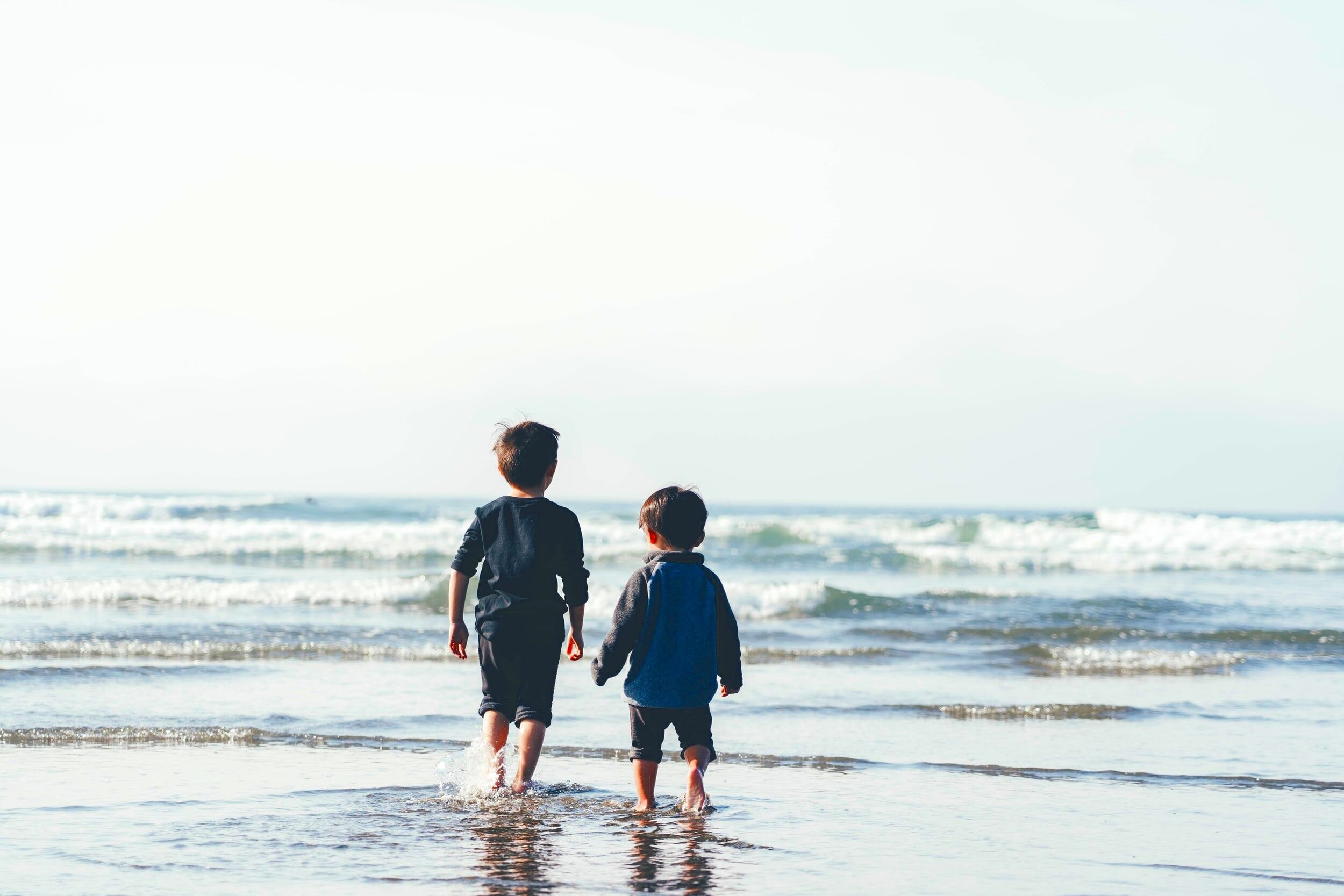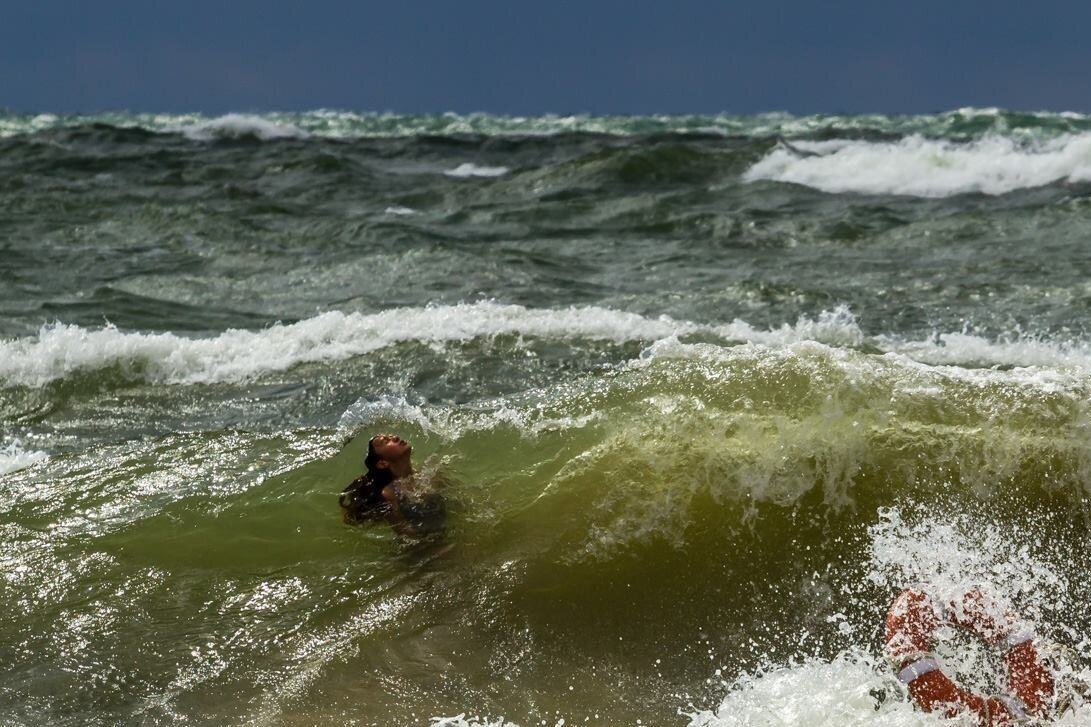
Water Safety for Parents & Educators
Believe it or not, kids do listen to their parents. Moms, dads, grandparents, teachers, nannies, babysitters, and others responsible for kids need to be especially vigilant around water.
Drowning is the leading cause of accidental death in kids 1-4, and second in all kids under 15. Nothing is worse than losing a child.
Think you’re ready for a safe day at the beach? Know how to avoid, escape, and safely save others from drowning by reading our Top 10 Lifesaving Water Safety Tips/Best Practices for kids and adults first...
AVOID DROWNING
Tip 1: You’re Not a Fish, So Wear Your Lifejacket
This poster was designed by middle schooler Lauryn Dewhurst to keep her friends and other kids safe around the water.
Navy Seals are the best trained swimmers in the world and they wear lifejackets, and so should you. Set a safe example by wearing yours.
You don’t wait to buckle your kids up until you’re about to crash, or put on their bike helmet when they’re about to fall, so don’t wait to put on their lifejacket until they’re struggling in the water.
Accidents happen quickly near shore and in open water. Three fourths of boating fatalities are from drowning, and 85% of victims were not wearing lifejackets.
Lifejackets are cool. Drowning? Not so much.
Buy a Coast Guard-approved, colorful lifejacket. Avoid blue or black, so they are more visible in the water. “Water wings” on arms only are dangerous. Reflectors are good, and buy a waterproof whistle to go with it.
Don’t just bring it – wear it.
Buy one. Borrow one. Bring one. Wear one.

AVOID DROWNING
Tip 2: Know Before You Go
This award-winning poster design from Mia Ingratta lists several important items for the beach.
Also on your list should be checking the weather forecast. The National Weather Service (NWS) issues warnings based on current and forecasted conditions.
Storms develop quickly in the Great Lakes area. Rip currents, rogue “sneaker” waves, seiches, and meteotsunamis can surprise you, even on sunny days.
Take a few minutes when you arrive to notice the wind and waves. Scan the beach for safety features like lifeguards, rescue equipment, and loaner lifejackets.
Notice whether the beach has a flag or LED warning system, with green, yellow, and red indicators. Green means swim but still stay aware. Yellow means use extra caution. Red means don’t go out.
Does your beach have our universal warning signage yet? Scan the QR code with your smartphone to get the latest from the NWS.
AVOID DROWNING
Tip 3: Stay Dry When Waves Are High
This tip may seem obvious for most but for some, big waves are especially enticing.
Waves on the Great Lakes can be chaotic, especially when dangerous currents collide with them, creating a washing machine effect.
Waves on the ocean may be bigger, but there is more time in between them to escape. Great Lakes waves are relentless. 84% of current-related incidents occur when waves are as small as three feet high.
When in doubt, don’t go out and if you do, wear a lifejacket or bring some other flotation device.

AVOID DROWNING
Tip 4: Steer Clear of the Pier
Keep the kids away from piers, breakwalls/breakwaters, jetties, and other structures during high water and wave conditions.
45% of current-related drownings and rescues occur near structures.
Many drownings occur when kids jump off or are swept off piers by wind and waves. There is often cement or rocks below and the colliding waves and currents create a washing machine effect that takes swimmers and would-be rescuers every year.
Enjoy the view of the pretty lighthouse from shore.
AVOID DROWNING
Tip 5: Swim Near a Watchful Adult
Lifeguards are real-life superheroes and the best investment a shoreline community or park can make to keep their residents and visitors safe around the water.
Sadly, many shoreline community and park leaders choose to substitute lifeguards with “no lifeguard on duty signs” (that don’t save anyone), leaving children and adults far more vulnerable to drowning tragedies, and untrained would-be rescuers often head in to try and save someone, only to become victims themselves.
Choose a beach with lifeguards and find out what hours they are on duty. If you can’t find one, it may be all up to you to watch the kids in the water, so please put that phone down and watch them like a hawk. Don’t assume someone else is watching your kids. Better yet – get in with them and keep them at arm’s length.

ESCAPE DROWNING
Tip 6: Don’t Fight the Current
Rip currents can form in waves as little as 2-3 feet and they are hard to spot from shore. Look for a break in the incoming waves where the water is rushing back out, but know that they could be there even if you can’t see them.
Even an Olympic swimmer can’t fight the force of a dangerous current, so you and your kids certainly can’t. Respect the power. Break the grip of the rip by swimming to the side.
ESCAPE DROWNING
Tip 7: Yell For Help Early
The closer someone gets to drowning the harder it is for them to yell – they can only gasp for air – and drowning happens quickly.
Even if you feel embarrassed or don’t believe anyone can hear you, Yell for Help Early and teach your kids to do the same.

ESCAPE DROWNING
Tip 8: Flip, Float & Follow
Your kids know to Stop, Drop & Roll if they are burning, so make sure they know to Flip, Float & Follow if they are drowning.
Tell them to Flip onto their back, not panic, and to fill their lungs with air so they are more buoyant as they Float to conserve energy (and Yell For Help Early), and then Follow the safest path back to shore – swim to the side if they can or keep floating.
SAFELY SAVE OTHERS
Tip 9: Save Yourself First
If someone is drowning, get help on the way and get flotation to them as soon as possible.
Look for a life ring or other rescue equipment. If none is available, find anything that you or other beachgoers may have brought – a boogie board, kayak, soccer ball, cooler – or even a big piece of driftwood.
Try to throw it to them first. If you decide to go in after them, bring the flotation with you and keep it between you and them.
Just like on a plane where they instruct you to put your oxygen mask on first so you can help others with theirs, save yourself first by using flotation.

SAFELY SAVE OTHERS
Tip 10: Be A Water Watcher
Even at a beach with lifeguards, you still need to keep an eye on your kids – they aren’t babysitters.
Lifeguards know that drowning doesn’t look like drowning. Hollywood shows it with lots of waving, splashing, and yelling yet in reality it is often swift, subtle, and silent. Look for a face tilted back and gasping for air at water level.
Kids are safest within arm’s reach of parents. Touch supervision is best with little ones. Don’t take your eyes off the bigger ones. Look at your kid, not your phone.
Download a Water Watcher Card from our friends at Safe Kids Worldwide here.
BONUS TIPS
Leave Inflatables at Home
Those giant inflatable swans, alligators, and unicorns are better for the pool (under close supervision). At the lake, offshore winds can blow them away in seconds.
If no one is on it, don’t go after it – let it go. If someone is on it, yell to them to hold on and not let go, then call 9-1-1 and try to flag someone down on a vessel to rescue them as quickly as possible.
Learn to Swim
Last but certainly not least, everyone should learn how to swim and be proficient in various swim skills. Get your kids in lessons early. The local Y or Goldfish Swim School are good places to start.
But as you now know from the tips above, knowing how to swim isn’t enough, especially in freshwater where you aren’t as buoyant as in the ocean.
The big lakes don’t care if you’re two feet tall or seven feet tall. Remember our #1 Tip: buy a lifejacket, bring a lifejacket, and wear a lifejacket – kids and adults.
Are you a teacher or school administrator?
Looking for guest speakers for an assembly? Have you had one on drowning prevention lately?
No matter where your school is located, your students and their families likely visit the water. We can help make them safer with one Zoom presentation from a water safety expert.
Interested? Click here to contact us.

What ELSE can you do?
You now have 10 Tips for keeping your loved ones safer around the water. Maybe you’re interested in drowning prevention and what else you can do? Here are a few things:
1) Join us, if you haven’t already. Sign up to receive our communications and ways you can volunteer and contribute to help more people.
2) Contact leaders of your favorite beaches to encourage them to make them safer for you and others. Lifeguards, life rings and other rescue equipment, webcams, 9-1-1 callboxes, flag & LED warning systems, beach warning signage, loaner lifejackets, and more will all help.
3) Start your own local water safety group. While our tips are meant to be universal, each beach has its own characteristics and there is power in numbers, so assemble your own group. Let us know if you need help getting started.












